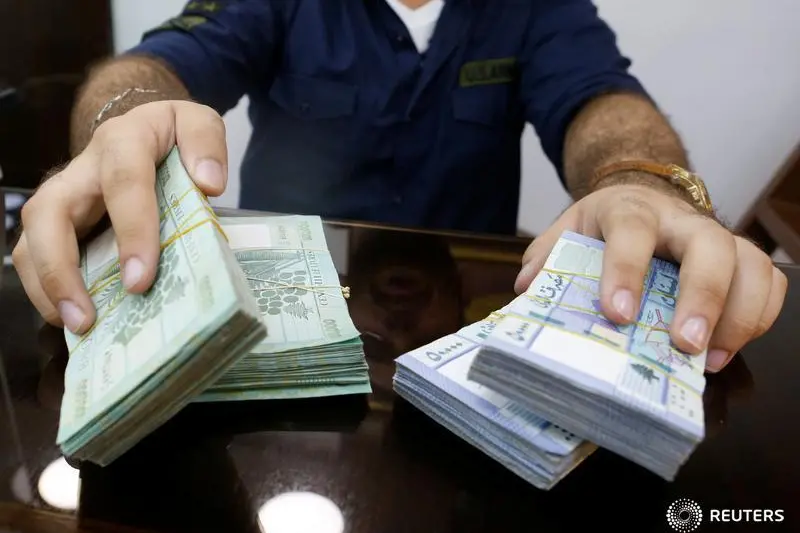PHOTO
BEIRUT: Total bank deposits of the Lebanese banking sector have declined by more than $30 billion over a 13 month period ending in September 2020, Byblos Bank said.
Aggregate private sector deposits dropped by $30.4 billion in the 13-month period ending in September 2020, due largely to the repayment of loans, to the hoarding of cash at households, to banks and companies paying their foreign obligations, and to deposit outflows, according to Byblos Banks Lebanon This Week, quoting Central Bank figures.
Central Bank governor Riad Salameh said Wednesday that close to $10 billion in cash are believed to be kept in households of Lebanese citizens and this maybe one of the reasons behind the liquidity crunch in the market.
The run on the dollars started in earnest during the outbreak of the anti-government protests in October 2019, prompting banks to apply strict capital control.
Parliament has failed to pass the capital control law which is one of the main conditions of the International Monetary Fund.
Byblos Bank explained that total private sector deposits reached $142.2 billion at the end of September 2020, contracting by 10.5 percent from the end of 2019 and by 16.5 percent from end-September 2019.
Deposits in Lebanese pounds reached the equivalent of $28.1 billion at end-September 2020, and declined by 26.2 percent from the end of 2019 and by 39.1 percent from a year earlier; while deposits in foreign currency reached $114.1 billion, as they regressed by 5.6 percent from end-2019 and by 8.1 percent from end-September 2019.
In nominal terms, private sector deposits declined by $3.8 billion in Lebanese banks consolidated balance sheet declined by 26.6 percent at the end of September 2020 to $192.6 billion compared to the same period of 2019.
The consolidated balance sheet of commercial banks operating in Lebanon shows that total assets stood at $192.6 billion at the end of September 2020, constituting a decrease of 11.2 percent from $216.8 billion at the end of 2019 and a decline of 26.6 percent from $262.2 billion at end-September 2019.
The report added that the dollar figures are based on the official exchange rate of the Lebanese pound to the US dollar.
The year-on-year decline in assets is mainly due to the "netting" on the assets and liabilities' sides of the consolidated balance sheet of banks, as part of the implementation of international accounting standard IFRS 7 starting in December 2019.
The report gave no reason behind the sharp decline in assets and deposits in this period.
It added that loans extended to the private sector reached $38.6 billion at the end of September 2020, and declined by 22.4 percent from end-2019 and by 29.2 percent from a year earlier. Loans to the resident private sector totaled $34.1 billion, constituting a decrease of 22.7 percent from the end of 2019 and of 28.6 percent from end-September 2019.
Credit to the non-resident private sector reached $4.5 billion at end-September 2020, contracting by 20 percent from end-2019 and by 33 percent from a year earlier.
Copyright 2020, The Daily Star. All rights reserved. Provided by SyndiGate Media Inc. (Syndigate.info).












